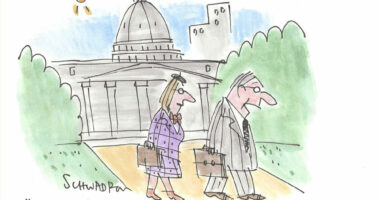
To include your event in the Briefing and Live Calendar, please fill out this form.
Weather: Mostly sunny. Highs in the mid 70s. Northeast winds 10 to 15 mph. Friday Night: Partly cloudy. Lows in the upper 60s. Northeast winds 10 to 15 mph.
- Daily weather briefing from the National Weather Service in Jacksonville here.
- Drought conditions here. (What is the Keetch-Byram drought index?).
- Check today’s tides in Daytona Beach (a few minutes off from Flagler Beach) here.
- Tropical cyclone activity here, and even more details here.
Today at a Glance:
Free For All Fridays with Host David Ayres, an hour-long public affairs radio show featuring local newsmakers, personalities, public health updates and the occasional surprise guest, starts a little after 9 a.m. after FlaglerLive Editor Pierre Tristam’s Reality Check. Today: a face-off between Palm Coast mayoral candidates Cornelia Manfre and Mike Norris. See previous podcasts here. On WNZF at 94.9 FM and 1550 AM.
Flagler and Florida Unemployment Numbers Released: The state’s Commerce Department released the previous month’s preliminary unemployment numbers for Florida and its 67 counties, at 10 a.m. See the data releases page here.
The Blue 24 Forum, a discussion group organized by local Democrats, meets at 12:15 p.m. at the Palm Coast Community Center, 305 Palm Coast Parkway NE. Come and add your voice to local, state and national political issues.
Wandering Spiral Performs at The Gathering Place, 7 to 9 p.m. Oct. 18 at The Gathering Place, 204 Moody Blvd., Flagler Beach. The music duo Wandering Spiral, featuring Michelle Davidson and Rick de Yampert, FlaglerLive’s arts and culture writer, will perform original East-West fusion, Buddha lounge and trance soundscapes on sitar, Native American flutes, metal and wooden tongue drums, crystal and Tibetan singing bowls, digital tabla, tribal percussion and ethereal synth. Heather Hodovance will guide participants through opening and closing meditations and intention setting. Cost is $20. For more information or to purchase tickets in advance, go online at gatheringplace.events or call 386-338-3227. More details here.
| In Coming Days: Oct. 18: Wandering Spiral Performs at The Gathering Place, 7 to 9 p.m. Oct. 18 at The Gathering Place, 204 Moody Blvd., Flagler Beach. The music duo Wandering Spiral, featuring Michelle Davidson and Rick de Yampert, FlaglerLive’s arts and culture writer, will perform original East-West fusion, Buddha lounge and trance soundscapes on sitar, Native American flutes, metal and wooden tongue drums, crystal and Tibetan singing bowls, digital tabla, tribal percussion and ethereal synth. Heather Hodovance will guide participants through opening and closing meditations and intention setting. Cost is $20. For more information or to purchase tickets in advance, go online at gatheringplace.events or call 386-338-3227. More details here. |
Readings: Robert Caro is the now-88-year-old Hercules racing the clock to finish the fifth and final volume of his biography of LBJ, a Decline and Fall for our time, in quality and subject. I am not exaggerating. Caro is an even better and more judicious, if not more objective, investigator than Gibbon was, and his prose, while not classically ornate as Gibbon’s, gains strength from its American purity and directness. It is a prose of immense power writing the biography of power. Caro’s first book though was The Power Broker: Robert Moses and the Fall of New York, the biography of one of the most imperious Americans of the last hundred years, the man who remade New York City in his image, demolishing swaths of it along the way, plundering old communities for his misguided notions of urban renewal, and tyrannizing over the city, over mayors and governors and populace, without ever having held an elected office. The book is 1,162 pages before the notes. It is a page-turner. I can boast: I have read it twice and will happily read it again, if only for the prose and the technique on display, though there’s so much more. It’s an immersive history of New York and its times (and The New York Times’s habit of licking Mose’s boots though most of New York’s power class did). A little while back the Times, converted to Caro’s version of Moses, ran a couple of pieces about Caro and the book’s 50th anniversary, a book that’s never been out of print. “Moses, in Caro’s telling, was nearly as autocratic and cultishly revered as Mao, all but unchallenged as he went about imprinting his ideas of urban improvement on the seat of the American imperium,” the paper reports. “Even the haughty [Gore] Vidal succumbed to Caro’s spell. It had taken him, he admitted, a full month to read “The Power Broker”’s more than 1,200 pages, but “not once — uniquely — did I find myself glumly rifling the pages still to be read at the back.” One reason is the story Caro tells. Another is his seductive prose, the iterative sentences as thickly cabled as Moses’s bridges, the incremental building of phrase upon phrase, of clause piled upon clause, all held together by the urgent rhythms of Caro’s voice.” A separate piece reveals to what extent Caro’s editor, great though he was (Robert Gottlieb at Knopf), butchered the book: “The original draft of “The Power Broker” totaled more than a million words, far too long to print as a single volume. Caro and Gottlieb had to slash 350,000 words — the rough equivalent of two or three average books. Five decades later, Caro still regrets many of the cuts. Squinting through the glass at a manuscript page that was cut from the final version, Caro reread his own lost words. The passages described the loneliness that older women living in the East Tremont neighborhood of the Bronx felt when they were forced from their homes, which were demolished to make way for Moses’s Cross Bronx Expressway. Next to the page was a cocktail napkin that held Caro’s scribbled lines, comparing the women of East Tremont to the characters in the musical “Fiddler on the Roof.” “I thought that was about the best thing I wrote,” Caro said. “A lot of my writing I’m not proud of, but something that you are proud of, to think no one’s ever going to read it, if you want to know the truth, it’s very sad.”” So not for us, a restored version of the complete Power Broker, a study in power that stood as a prelude to the greater study in power that is the LBJ biography. Power, not influence. “Influence?” asked Hans in Katherine Ann Porter’s “The Leaning Tower,” “A purely oblique, feminine, worthless thing, influence. Power, pure power is what counts to a nation or a race. You must be able to tell other peoples what to do, and above all what they may not do, you must be able to enforce every order you give against no matter what opposition, and when you demand anything at all, it must be given you without question. That is the only power, and power is the only thing of any value or importance in this world.” That was Moses, and Moses was nothing compared to LBJ.
—P.T.
Now this:
![]()
The Live Calendar is a compendium of local and regional political, civic and cultural events. You can input your own calendar events directly onto the site as you wish them to appear (pending approval of course). To include your event in the Live Calendar, please fill out this form.
October 2024

Wednesday, Oct 16
Tourist Development Council Meeting
Government Services Building

Friday, Oct 18
Free For All Fridays With Host David Ayres on WNZF

Friday, Oct 18
Flagler and Florida Unemployment Numbers Released

Friday, Oct 18
Blue 24 Forum
Palm Coast Community Center

Friday, Oct 18
Wandering Spiral Performs at The Gathering Place

Saturday, Oct 19
Coffee With Flagler Beach Commission Chair Scott Spradley
Law Office of Scott Spradley

Saturday, Oct 19
Flagler Beach Farmers Market
315 South 7th Street, Flagler Beach

Saturday, Oct 19
Democratic Women’s Club
Palm Coast Community Center

Saturday, Oct 19
Grace Community Food Pantry on Education Way
Flagler School District Bus Depot

Saturday, Oct 19
Random Acts of Insanity’s Roundup of Standups from Around Central Florida
Cinematique of Daytona Beach
No event found!
For the full calendar, go here.
![]()

From the sea New York Harbor was a sight to make authors strain for adjectives. Writers had described the colossal staired and serried mass of towering skyscrapers, which seemed to be rising out of the water, as a giant ship (Melville had been reminded that the very name “skyscraper” had once been used by sailors to describe a sailing ship’s topmost canvas); as a «structure of tiered decks,” pointing at the watcher and “growing taller and taller” like the prow of a furiously onrushing vessel; as a medieval fortress, whose towers, rising out of swirling tides, at night were “blocked by darkness into a sentinelled medieval keep of enormous height and unscalable defense” that might have been inhabited more fittingly by dead kings than recent bankers; as a mesa, a petrified forest, a “giant’s cromlech.” And the very number of the metaphors proved the power of the scene to excite the imagination, proved, in fact, the truth of the one image used most frequently to describe it: that the view of New York from its harbor was one of the wonders of the world. The unique importance of Battery Park to New York City was obvious not from the sea but from the air- from a plane or from the observation platform of the Empire State Building a thousand feet in the sky over Manhattan Island. To the observer looking out over what has been called “the most significant panorama that modern civilization offers,” the buildings in which 12,000,000 persons lived and worked in 1939 seemed to stretch out endlessly to the horizon. But from such vantage points it could be seen that they were not only stretching out but closing in, building up, pressing inward, crowding closer and closer together, until, as if the concentrating inward surge of humanity constituted a geologic force, in the epicenter of that surge the buildings of Manhattan were thrust upward and toward the sky. And it was near the island’s southern tip, the tip jutting into the harbor, that the colossal upthrust had been greatest. In the upper part of Manhattan the masses of concrete were mostly sixty feet high, or seventy; in the center of the island, they were a hundred and fifty or two hundred. But as the island narrowed toward its southern tip, they were four hundred feet high, five hundred, cramming closer and closer together, bulking up higher and higher as they loomed southward pressing inexorably toward the island’s tip–until at the very tip, at the very end of the most crowded island in the world, at the very spot in the entire world in which buildings should have been crowded most closely together, there were suddenly, with the exception of a tiny old fort converted into an aquarium, no buildings at all. At a point at which a single square foot of land was worth thousands of dollars, at which the value of an acre was computed not in the millions of dollars but in the tens of millions, there sat 967,032 square feet of land–22.2 acres–vacant except for grass and trees, pathways between them, benches, and a broad, breezy waterfront promenade.
And it wasn’t from either sea or air that the value of park and harbor was most apparent. It was from the ground, from the nearby streets of the city, from the bleak narrow concrete canyons of Lower Manhattan from which towering masses of concrete and steel had crushed sunlight and sky and green grass and trees and, by hemming between them the swirling concentration of humanity (half a million human beings worked in Manhattan’s single southernmost mile), peace. If there was ever a place in which a man occasionally needed to be alone for a while, to sit in the open, in the sun, among grass and trees, for a minute or two, to escape from crowds and noise, that place was Lower Manhattan. And in all the streets of Lower Manhattan, there was no place to do so. There should, moreover, have been a sense of the sea in Lower Man-hattan, which was, after all, the tip, the seamost tip, of the island that was the world’s largest seaport. But there was no sense of the sea in Lower Manhattan; skyscraper walls blocked that out, too. CnThere was no sense of history, either.
–From Robert Caro’s The Power Broker (1974). .
The Cartoon and Live Briefing Archive.









